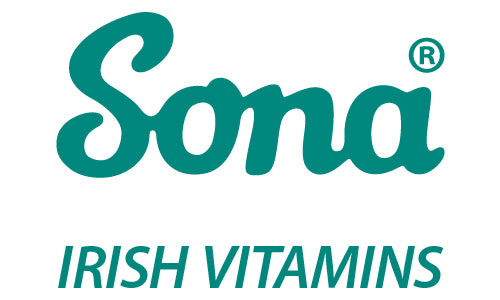
Iron is responsible for producing red blood cells in the human body, which carry oxygen to the body’s tissues. Anaemia is a condition where one lack’s enough healthy blood cells to carry adequate oxygen to the tissues. One way of treating anaemia is with oral iron supplementation.
In this article you can find:
- What is iron?
- What is anaemia?
- How does iron supplementation treat anaemia?
What is iron?
Iron is an essential mineral we need for growth and development. Iron’s main role in the body is to produce hemoglobin, a protein molecule in red blood cells that transports oxygen from the lungs to the body’s tissues, as well as myoglobin, a protein that provides oxygen to muscles.
Iron can be categorized into two groups, haem iron, and non-haem iron. Haem iron is found in animal products, such as beef, liver, pork, chicken, and fish. Depending on an individual’s iron stores, approximately 15-35% of haem iron is absorbed by the body. Non-haem iron is predominantly found in plant foods, including beans, broccoli, spinach, nuts, and lentils. However, only 5-15% of non-haem iron can be absorbed. Consuming foods that are rich in vitamin C, such as berries, peppers, kiwis, broccoli, kale, with non-haem iron can help boost absorption.
Non-haem iron is also sensitive to compounds found in tea, coffee, and cocoa, which can ultimately reduce your body’s ability to absorb the iron by 39-90%. Thus, it is important to try not drink these drinks while you are consuming iron rich foods. Thereby, it is best to avoid tea, coffee, and cocoa at mealtimes and waiting an hour after your meal to drink tea, coffee, and cocoa, to promote adequate absorption.
What is anaemia?
Anaemia is a blood condition defined by having a low number of red blood cells, and can cause symptoms like fatigue and shortness of breath (this is because your organs are receiving enough oxygen to work the way they should). Additional symptoms can include dizziness or light headedness, unusual heartbeat, headache, bodily pain, growth problems, pale or yellow toned skin, as well as cold hands and feet. However, symptoms are dependant of the type and cause of anaemia (there are over 400 types of anaemia, which are classified into three groups; anaemia caused by blood loss, anaemia cause by decreased or faulty red blood cell production, or anaemia caused by destruction of red blood cells).
How does iron supplementation treat anaemia?
Anaemia is treated in different ways, dependant of the type of anaemia you have, as well as what is causing it.
Iron deficiency anaemia is the most common cause of anaemia and can be treated by iron supplementation. The purpose of iron supplementation is to increase levels of iron within the body, to either reverse low iron levels within the body or treat the symptoms of iron deficiency anaemia. Supplementing with iron supplements can produce quicker results than diet interventions alone.
Sona Iron Complete MAX is a specially formulated, non constipating, delicious tasting Iron supplement in a base of sorbitol and honey.
In addition to iron, Sona Iron Complete also includes a comprehensive range of co-factor multivitamins to support energy, cognitive function, proper function of the immune system, mental performance, cell division and nervous system health.
References
- default - Stanford Children's Health. (2021). Retrieved 6 July 2021, from https://www.stanfordchildrens.org/en/topic/default?id=babies-and-toddlers-need-iron-to-thrive-1-4100.
- Georgieff, M., Krebs, N., & Cusick, S. (2019). The Benefits and Risks of Iron Supplementation in Pregnancy and Childhood. Annual Review Of Nutrition, 39(1), 121-146. doi: 10.1146/annurev-nutr-082018-124213.
- (HSE, 2021). Retrieved 17 June 2021, from https://www.hse.ie/eng/about/who/acute-hospitals-division/woman-infants/clinical-guidelines/nutrition-during-pregnancy.pdf.
- Iron needs of babies and children. (2007). Paediatrics & Child Health, 12(4), 333-334. doi: 10.1093/pch/12.4.333.
- Office of Dietary Supplements - Iron. (2021). Retrieved 6 July 2021, from https://ods.od.nih.gov/factsheets/Iron-HealthProfessional/.
- Pawlak, R., Berger, J., & Hines, I. (2016). Iron Status of Vegetarian Adults: A Review of Literature. American Journal Of Lifestyle Medicine, 12(6), 486-498. doi: 10.1177/1559827616682933.
- Sundararajan, S., & Rabe, H. (2020). Prevention of iron deficiency anemia in infants and toddlers. Pediatric Research, 89(1), 63-73. doi: 10.1038/s41390-020-0907-5.
- Tran-Duy, A., Connell, N. J., Vanmolkot, F. H., Souverein, P. C., de Wit, N. J., Stehouwer, C., Hoes, A. W., de Vries, F., & de Boer, A. (2019). Use of proton pump inhibitors and risk of iron deficiency: a population-based case-control study. Journal of internal medicine, 285(2), 205–214. https://doi.org/10.1111/joim.12826.
- Women and Iron - INDI. (2021). Retrieved 17 June 2021, from https://www.indi.ie/women-s-health/546-women-and-iron.html.
- Wouthuyzen-Bakker, M., & van Assen, S. (2015). Exercise-induced anaemia: a forgotten cause of iron deficiency anaemia in young adults. British Journal Of General Practice, 65(634), 268-269. doi: 10.3399/bjgp15x685069.
- Young, I., Parker, H., Rangan, A., Prvan, T., Cook, R., & Donges, C. et al. (2018). Association between Haem and Non-Haem Iron Intake and Serum Ferritin in Healthy Young Women. Nutrients, 10(1), 81. doi: 10.3390/nu10010081.
